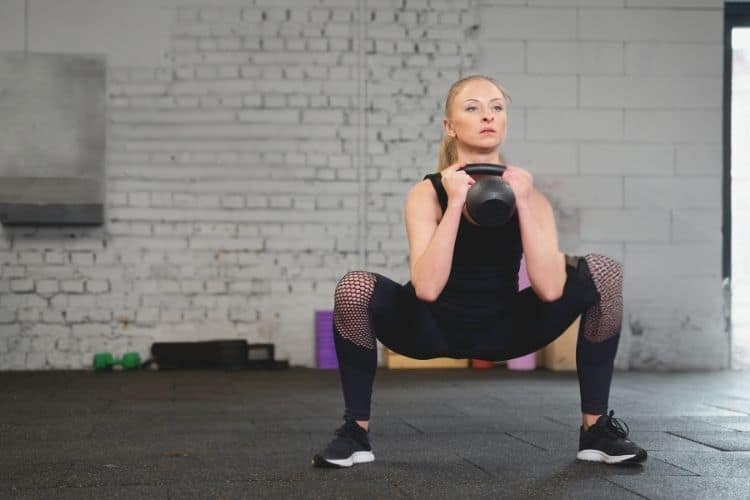Sign up for workout ideas, training advice, reviews of the latest gear and more.






In the world of fitness, buzzwords are plentiful, yet few are as critical and beneficial as ‘muscle activation’. Especially for women, understanding and incorporating muscle activation techniques can lead to enhanced physical performance, injury prevention, and a more balanced and functional body. So, what is muscle activation, and why should every woman make it a priority in her fitness regimen?
Muscle activation refers to engaging and firing up your muscles before and during exercises. It’s the process of ‘waking up’ muscles that might be dormant due to our sedentary lifestyles or compensatory patterns we’ve developed over the years. By consciously activating them, we ensure they are working efficiently during exercises, leading to better results and reduced injury risk.
Hormonal Changes & Muscular Health: Women undergo various hormonal changes throughout their lives, from menstruation to pregnancy and menopause. These changes can influence muscle strength and bone density. Muscle activation exercises help in maintaining muscle mass, ensuring women maintain their strength and prevent age-related muscle loss.
Posture & Sedentary Lifestyles: Many modern-day jobs involve long hours sitting at desks. This sedentary lifestyle can lead to weakened core muscles, rounded shoulders, and tight hip flexors. Muscle activation techniques, especially for the core, glutes, and back muscles, can counteract these negative effects.
Injury Prevention: Women, due to their anatomy, are more prone to certain injuries like ACL tears. By activating the muscles surrounding vulnerable areas (like the knees), women can protect themselves better during physical activities.
Enhanced Physical Performance: Whether you’re an athlete or someone who exercises casually, muscle activation ensures you’re getting the most out of your workout. Activated muscles can produce more power and endurance.
1. Glute Activation: Glutes are often termed as ‘sleepy’ due to prolonged sitting. Before squats, lunges, or any leg workout:
2. Core Activation: Engaging the core not only strengthens it but also protects the spine during exercises.
3. Shoulder Activation: Especially important for women who experience rounded shoulders due to posture or breastfeeding.
4. Quadriceps and Hamstring Activation: Vital for protecting the knees during exercises.
The Science and Benefits of Muscle Activation for Women
To fully appreciate the impact and necessity of muscle activation for women, it’s important to delve deeper into its science and the multitude of benefits it provides. After all, an informed approach to fitness often yields the most fruitful results.
Muscle activation is rooted in the principle of neuromuscular efficiency. Essentially, our brain sends signals to our muscles via the nervous system, instructing them to contract. However, due to various factors like sedentary lifestyles, previous injuries, or poor exercise habits, some muscle groups don’t receive these signals effectively. As a result, other muscles may overcompensate, leading to imbalances and increased risk of injury.
The role of muscle activation exercises is to re-establish and reinforce this brain-muscle connection. By repetitively focusing on specific muscle contractions, we “train” our nervous system to better engage these muscles, ensuring they function at their peak capacity during more complex movements.
1. Improved Body Composition:
Muscle activation isn’t just about preventing injuries or optimizing performance. It also plays a role in improving body composition. When muscles are activated and engaged properly, they work harder and burn more calories. Over time, this can lead to increased muscle tone and a reduction in body fat percentage.
2. Rehabilitation and Recovery:
For women recovering from injuries or surgeries, especially those related to childbirth, muscle activation techniques can serve as an effective bridge from physical therapy to regular exercise. They help ensure that muscles are working correctly, preventing re-injury and aiding in a smoother recovery.
3. Enhanced Flexibility and Mobility:
By focusing on activating specific muscle groups, you’re also promoting better muscle lengthening. Over time, this can lead to increased flexibility and joint mobility, allowing for a greater range of motion during exercises and everyday activities.
4. Mental Health Benefits:
The act of consciously connecting with one’s body, focusing on every contraction and movement, can be incredibly meditative. This mindfulness aspect of muscle activation can reduce stress, enhance mood, and even combat symptoms of anxiety and depression.
5. Back Activation:
The health of our back, particularly the upper and lower traps, is crucial.
6. Calf and Foot Activation:
Often overlooked, our calves and feet serve as the foundation for most movements.
It’s not just during workouts; muscle activation techniques can also be incorporated into daily routines. Simple stretches and contractions while at your desk job, waiting for your morning coffee, or even during TV breaks can contribute to the cumulative benefits of muscle activation.
Examples include:
The journey of understanding muscle activation is vast and deeply enriching. For women, it’s more than just a set of exercises; it’s a paradigm shift in approaching fitness. With enhanced knowledge and a plethora of techniques at one’s disposal, every woman can transform her fitness journey, ensuring it’s not only effective but also sustainable and holistic. Embrace muscle activation, and step into a world where strength, health, and mindfulness coalesce beautifully.
Stay up to date on the latest women’s health, fitness and lifestyle trends and tips.